Can Scouse Be Made With Beef
S couse is a dish so close to the Liverpudlian heart that they've adopted it as a nickname – though lobscouse, or lapskaus, lapskojs or skipperlabskovs, depending where you are, is a popular dish throughout northern Europe, thought to have its origins in the simple cooking of Hanseatic sailors, and with even more variants than names. In Germany, for example, labskaus is more like corned beef hash, while in Norway, lapskaus is a chunky stew much like our own.
Unsurprisingly, given the geography of the area, Liverpool's scouse isn't dissimilar to Irish stew or Lancashire hotpot, either, and, like those noble dishes, is eminently practical, easy to make in a small kitchen, or indeed a galley, and to adapt to current circumstances – there's even a vegetarian variant, blind scouse, for when you can't, or won't, run to meat. But while Scousers are united on its virtues, as with all such beloved local specialities, passions run high when it comes to the finer details. Beef or lamb, mince or meat, carrots or swede … wish me luck, I'm going in.
The meat
The first problem I have is what kind of meat to use: lamb is apparently the classic choice, and as Andrew Webb notes in his book Food Britannia, there's "a strong geographical argument for lamb being more authentic", given that both Irish stew and Lancashire hotpot use it, too, but, "if born-in-the-shadow-of-the-Liver-Building scousers prefer to use beef, who am I to argue?" Indeed, I hear talk of scouses made with corned beef, attributed, by Wikipedia at least, to St Helens, where it is apparently known as "lobbies." Beef is probably as authentic as any, because sailors would presumably have used salted meat in the original version.
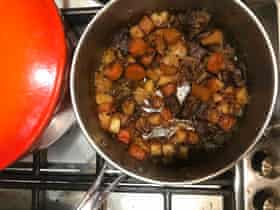
I, however, confine myself to the fresh kind, in this instance: chuck steak for the "world's best scouse" (their words, not mine) as served in Liverpool FC's cafe; minced beef as used by Maggie May's, a place that get quite a lot of love from scouse aficionados online, and in a family recipe posted online; lamb shoulder and kidney in Simon Rimmer's version; and lamb neck on the bone for Paul Hollywood's scouse pie.
Perhaps unsurprisingly, they all give very different results: mince is handy if time is of the essence, but proves less satisfying to eat than larger chunks of meat, not least because it disappears into the gravy after an hour or so on the hob.
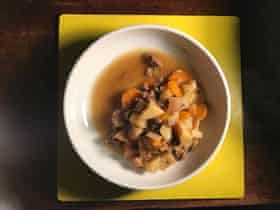
Chuck or shoulder are both excellent choices, depending on which meat you prefer (personally, I think lamb has a more interesting flavour), but bones will always improve any gravy – indeed, the final recipe I try, from Thomas Webster's 1845 Encyclopaedia of Domestic Economy, starts with bones from a roast, boiled up with potatoes and onions. Only latterly are pieces of leftover meat stirred in, and very fine the results are, too. Presuming you don't have enough to make a whole stew, however, I think Hollywood's lamb neck, or scrag end, is the best choice; you can always strip the meat off the bones before serving, if you like. Offal fans might like to add a few kidneys, too, for extra richness.
I've also chosen to brown the meat in dripping, because it feels right here; failing that, a neutral oil, or a mixture of oil and butter, as Rimmer suggests, will do fine. Hollywood's olive oil, however, tastes a bit weird.
The veggie version
You don't, of course, have to use any meat at all: when you couldn't quite run to any, you'd make the aforementioned "blind scouse" instead – often with bones, but you could use vegetable stock, or try the Quorn and sweet potato version in the Merseysider magazine.
Vegetables
Either way, this is a dish that's packed full of vegetables: onion is a must, and everyone but Webster's Encyclopaedia adds carrot, too. Hollywood also sticks in swede, which divides opinion; I happen to think that the sweetness works well with lamb, but if you're not a fan, feel free to use more carrot in its place.
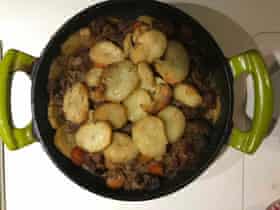
Most important, however, are the spuds. You can go fancy, as Rimmer does, and use them to line the dish, finishing with a crisp potato top reminiscent of a Lancashire hotpot, but we decide it's far more comforting to cook them until they break down to thicken the gravy, as in Webster's version. That said, a few fluffy chunks are also welcome to help soak up the sauce, so I'm going to add spuds in two stages: the first peeled and cut small to facilitate their dissolution, the second with the skins left on to help keep the cubes together.
The liquid and aromatics
Either make the stock yourself, as in Webster's recipe, or use ready-made; beef stock seems to be the name of the game, with Oxo cubes and gravy salts mentioned specifically by several correspondents. Liverpool FC starts its gravy with bitter ale, reduced by half, giving the scouse a robustly fruity, hoppy flavour; delicious, but if it ain't broke … though I will allow for a dash of Worcestershire sauce, because lots of people tell me their mum uses it, so it must be OK.
The cooking
As with most stews, the longer the cooking, the better – I prefer to do mine in a moderate oven, to keep the temperature fairly constant, though the hob works just fine, if you prefer. Once the meat is falling off the bone, you can cool it and skim the fat off the top, if you like, or do as Hollywood suggests and cover it in puff pastry and turn your scouse into a pie.
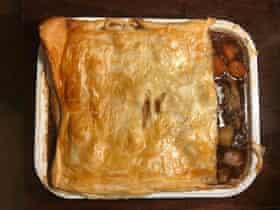
Personally, I prefer to eat it straight away, with a generous helping of pickled cabbage on the side (beetroot is also acceptable, and I reckon it would also be nice with steamed greens, but I need to check that with a scouser before I try).
Perfect scouse
Prep 25 min
Cook 2 hr
Serves 4
800g scrag end/lamb neck, on the bone, in thick slices, or 600g boneless lamb shoulder
2 tbsp beef dripping or neutral oil
500g floury potatoes, cleaned
2 onions
600ml beef stock
2 sprigs fresh thyme
1 bay leaf
2 carrots
250g swede (optional)
Salt and pepper
Worcestershire sauce, to taste
Heat the oven to 160C (140C fan)/320F/gas 3; alternatively, cook this on the hob. Heat the fat in a large, lidded saucepan or ovenproof pan over a medium-high heat, then sear the meat in batches, until properly browned.
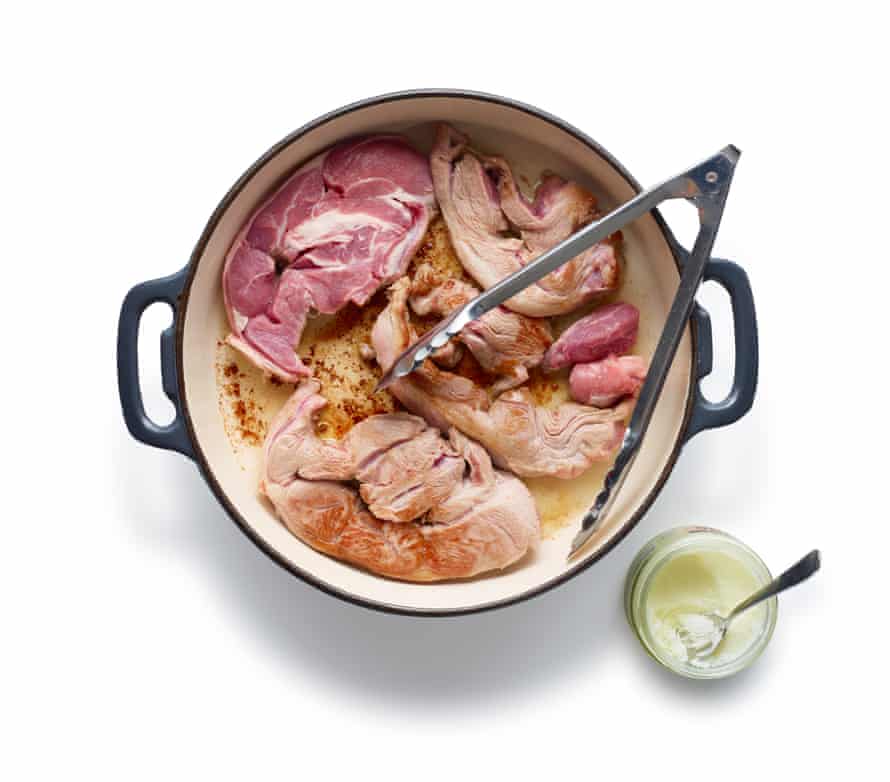
Lift out and set aside. Meanwhile, peel half the potatoes and cut into small cubes, setting the rest aside for the time being, and peel and thinly slice the onions.
Turn down the heat, add the onions and fry, stirring regularly, until soft.
Now add the cubed potatoes, fry for five minutes more, then stir in the stock, scraping the bits off the bottom of the pan as you do so, and return the meat to the pot along with the herbs.
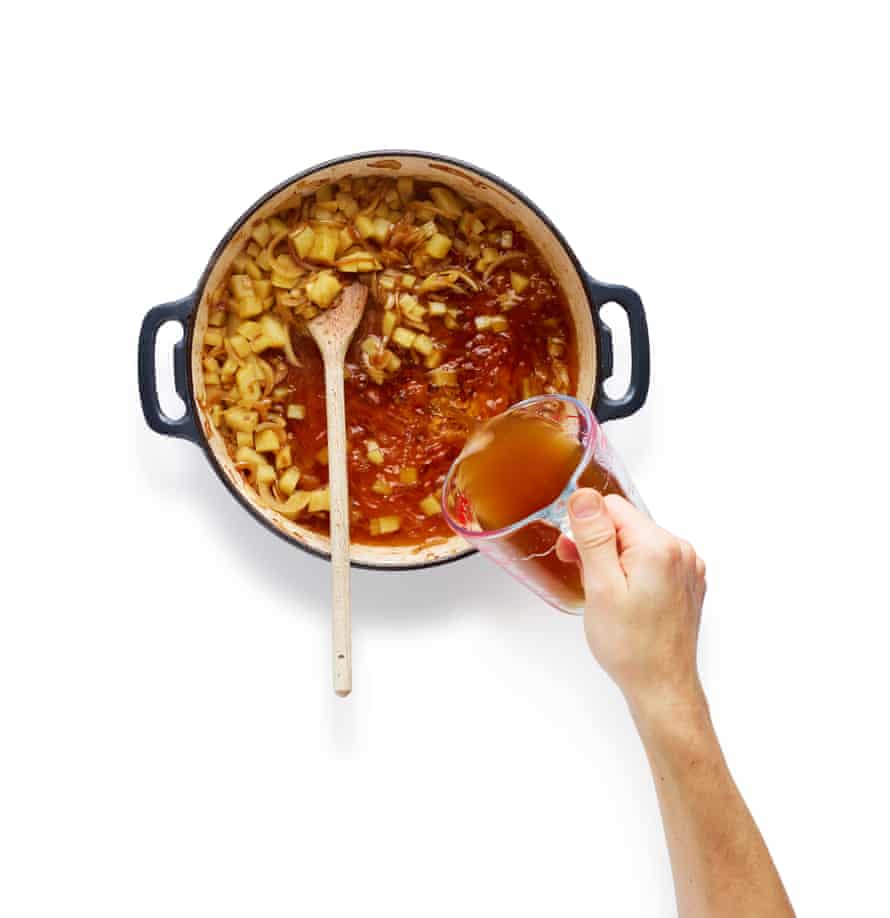
Bring to a simmer, then cover and put in the oven (or leave on a low heat) for 60 minutes, until the potatoes have begun to dissolve into the sauce. Mash a few of them against the sides of the pot to help them along.
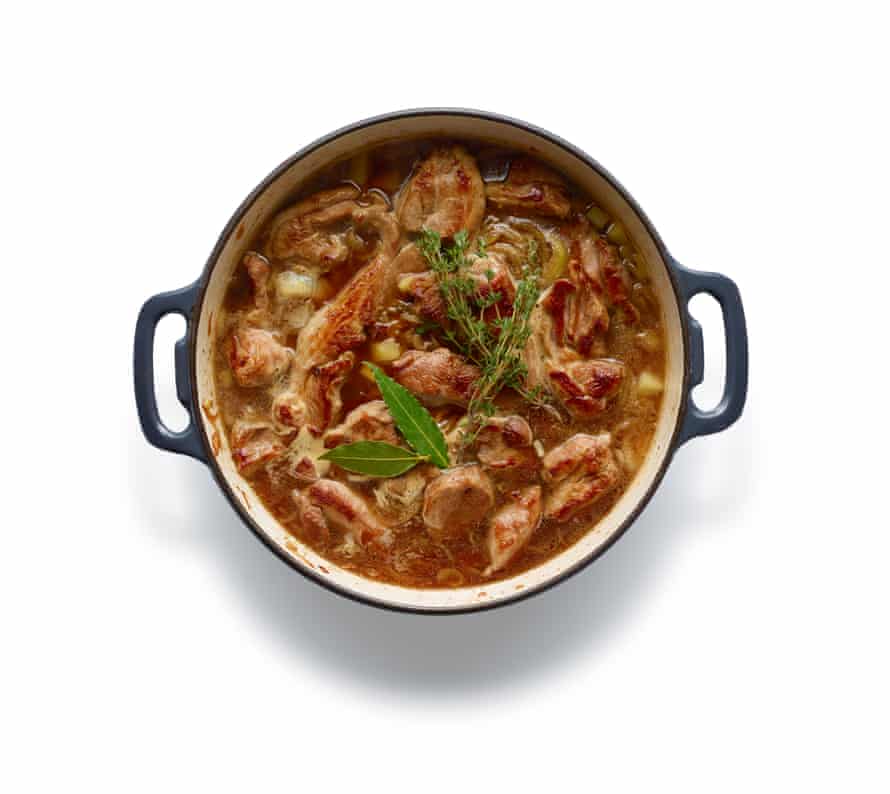
Meanwhile, peel and cube the carrots and swede, if using, and dice the remaining potatoes – there's no need to peel them.
After the scouse has been cooking for 60 minutes, add the vegetables to the pot and return to the oven (or hob) for another hour, or until the vegetables are tender.
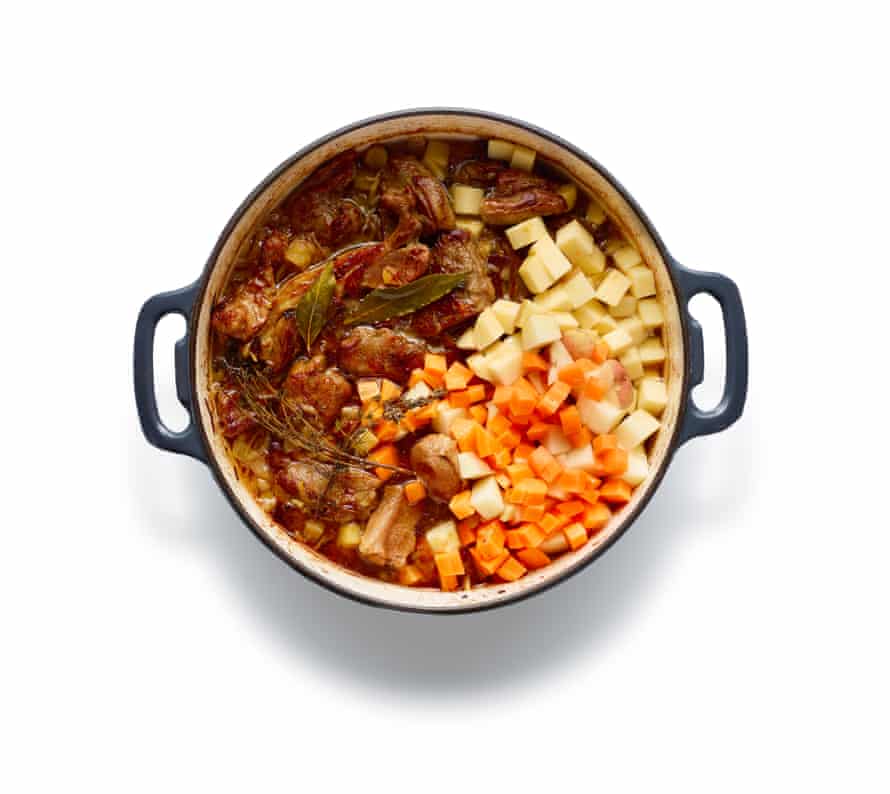
Season to taste with salt, pepper and a dash of Worcestershire sauce, and serve hot with pickled cabbage or beetroot.
Source: https://www.theguardian.com/food/2019/oct/30/how-to-make-the-perfect-scouse-stew-hotpot-recipe-felicity-cloake
0 Response to "Can Scouse Be Made With Beef"
Post a Comment